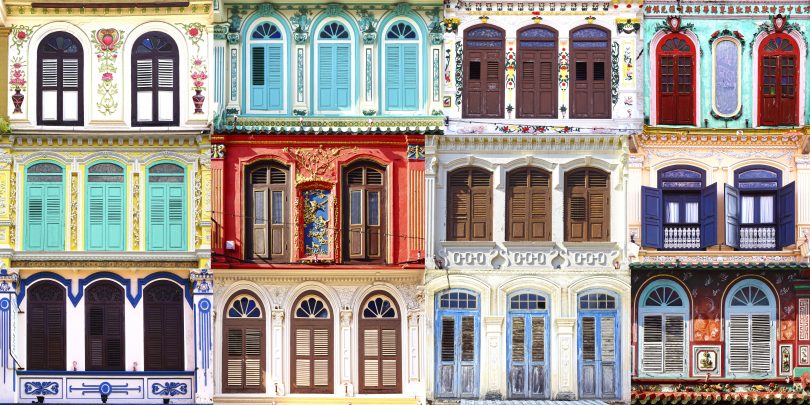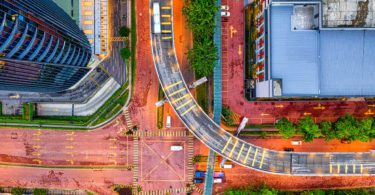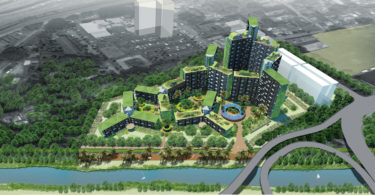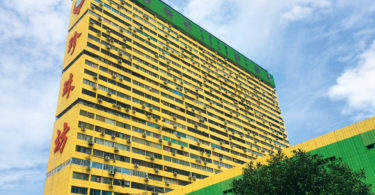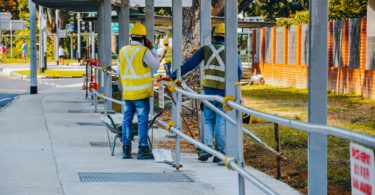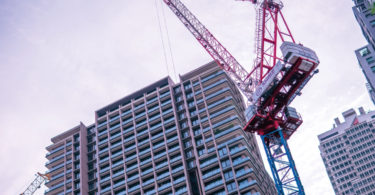By: Azeanita Suratkon & Muhamad Shahril Mohd Abdullah
Adaptive reuse, in line with sustainability principles, is a process of revitalising or reinventing disused or ineffective existing buildings for new functions. In Malaysia, this includes the revitalisation of old or historical buildings such as the heritage shop houses. Amidst the globalisation, such revitalisation is of a great importance because it helps preserve cultural artefacts that uphold the country’s identity.
In practice, however, adaptive reuse projects are often not optimal because they may not always be accompanied by a development plan. Rigorous research could help projects to achieve the goals not only in terms of improving the spatial functions, but also maximising the economic potentials. By reviewing policies and past adaptive reuse practices, this commentary aims to provide criteria of adaptive reuse potential for existing and heritage buildings in Malaysia, especially the heritage shop houses.
THE IMPORTANCE OF HERITAGE PRESERVATION
According to Malaysian Laws: National Heritage Act no. 645, heritage buildings can be one or more, separated or connected, buildings, which, due to their architecture, homogeneity or location on the landscape, are of outstanding universal value from the viewpoint of history, art or science. It is clear from these definitions that heritage buildings are valuable assets, worthy of conservation. They require continuous care and protection to preserve the historical, architectural, aesthetic, archaeological, spiritual, social, political and economic values.

To read the complete article, register your details above
to be notified once the revamped Construction Plus App is ready!
Azeanita Suratkon
 Assoc. Prof. Ts. Dr Azeanita Suratkon is Deputy Dean of Faculty of Civil Engineering and Built Environment, Universiti Tun Hussein Onn Malaysia (UTHM); an associate member of The Institute of Value Management Malaysia (IVVM), and a professional technologist (Ts.) registered with Malaysia Board of Technologists (MBOT). Previously, she was Head of Department of Architecture and Design Engineering cum Senior Lecturer at UTHM; Quantity Surveyor at Highway Division of SP Setia Bhd Group; and Contract Executive at the Building Information Centre, Faculty of Built Environment, Universiti Teknologi Malaysia. Her expertise includes adaptive reuse, procurement method, commuting accidents, temporary accommodation for construction workers, construction contract studies and water recycling.
Assoc. Prof. Ts. Dr Azeanita Suratkon is Deputy Dean of Faculty of Civil Engineering and Built Environment, Universiti Tun Hussein Onn Malaysia (UTHM); an associate member of The Institute of Value Management Malaysia (IVVM), and a professional technologist (Ts.) registered with Malaysia Board of Technologists (MBOT). Previously, she was Head of Department of Architecture and Design Engineering cum Senior Lecturer at UTHM; Quantity Surveyor at Highway Division of SP Setia Bhd Group; and Contract Executive at the Building Information Centre, Faculty of Built Environment, Universiti Teknologi Malaysia. Her expertise includes adaptive reuse, procurement method, commuting accidents, temporary accommodation for construction workers, construction contract studies and water recycling.
Muhamad Shahril Mohd Abdullah

Muhamad Shahril Mohd Abdullah is Site Engineer at EMQ Link Sdn Bhd, Malaysia, and is currently involved in the development of Shah Alam Business Park. He is also Graduate Member of Board of Engineers Malaysia and Malaysia Board of Technologist. He holds a master degree (by research) in Civil Engineering from the Universiti Tun Hussein Onn Malaysia in 2018 and is expected to start his PhD study in October 2020 to further research the adaptive reuse practices in Malaysia.
References:
Fitch, M, 1992, Historic Preservation, Curatorial Management of the Built World, University Press of Virginia, Charlottesville and London. In Carmona, M, 2003, Public Places Urban Space, The Dimension of Urban Design, Architectural Press, Oxford.
Langston, C., Wong, F.K.W., Hui, E.C.M., and Shen, L.Y. (2008) Strategic assessment of building adaptive reuse opportunities in Hong Kong.Journal of Building and Environment; 43: 1709 -1718
Remøy, H. T., &Voordt, T. J. M. Van Der. (2007). A new life: conversion of vacant office buildings into housing. Facilities, 25(3/4), 88–103.
Wan Ismail, W.H. and Shamsuddin, S. (2005). The old shop houses as part of Malaysian urban heritage: the current dilemma. The 8th International Conference of the Asian Planning Schools Association, September 2005.
Yung, E. H. K., Langston, C., & Chan, E. H. W. (2014). Adaptive reuse of traditional Chinese shophouses in government- led urban renewal projects in Hong Kong. Cities, 39, 87–98.

 Hong Kong
Hong Kong Singapore
Singapore Indonesia
Indonesia Tiếng Việt
Tiếng Việt ประเทศไทย
ประเทศไทย

